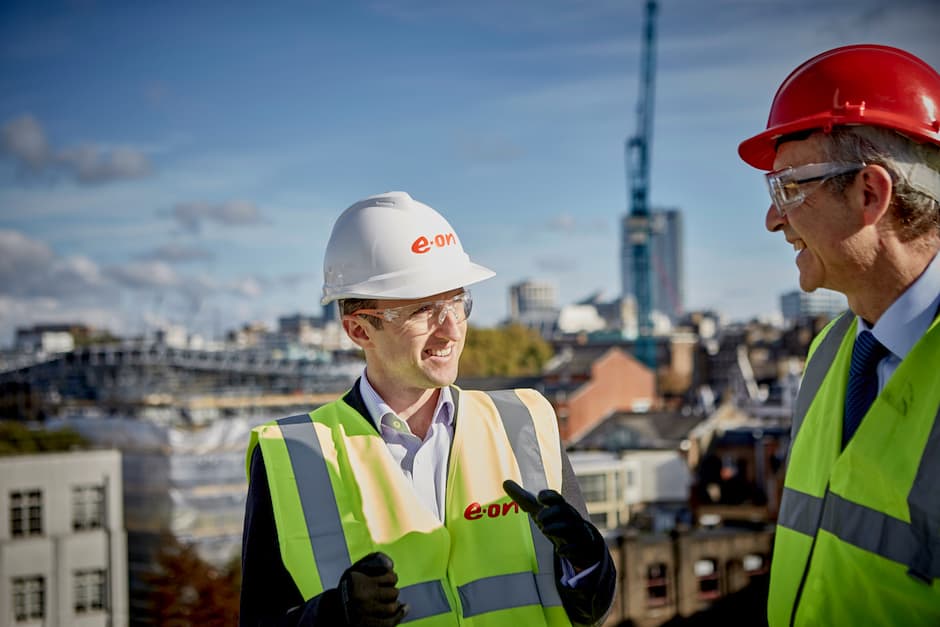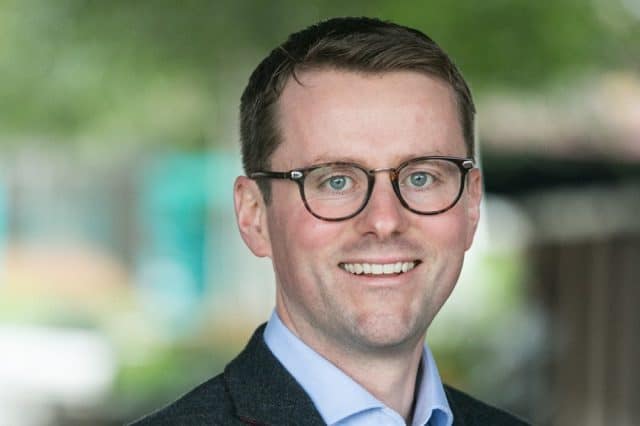District heat networks that use locally available waste heat could be key to delivering on the UK's low carbon energy commitments. Will Stirling reports
Engineers in the energy distribution and heating industry are working on a daunting but exciting challenge that recently received a government boost.
About half of all energy consumed is used to generate heat and hot water and, to achieve government carbon targets to comply with UK’s Paris Agreement obligations, the carbon intensity of this energy needs to be reduced by 90 per cent by 2050. As vast amounts of waste heat produced by sources from processing plants, data centres and even sewage are going, literally, up the chimney, it's little surprise that the UK’s energy and heat policy is now focused on capturing this heat to distribute it to consumers, cutting CO2 emissions and lowering the amount of energy required to heat water.
Engineers and heat experts are looking to Europe to adopt a system that redesigns heating and energy into a smart, decarbonised, integrated system – heat networks.
Traditional heating systems like gas boilers, tend to be binary – either “fully on” or “off”, requiring high energy inputs to raise the temperature of water from the ambient temperature to be useful for heating buildings, say to 40°C. A heat network, drawing heat from waste sources, is designed to supply water at a higher temperature than the environmental temperature (that might be 10°C or lower), thereby lowering the energy needed to heat it up.

Other appealing features of a heat network is that a well-designed system can be used for both heating and cooling. It also sources what is locally available, minimising the expensive transportation of heat as well as using untapped sources such as a processing plant, data centre or ground source.
“Britain has been very good at decarbonising electricity but decarbonising heat on a mass scale has been left in the too-difficult-to-handle box,” said Dr Eoghan Maguire, head of business development at Vattenfall Heat UK. “But it is now addressing heating, and is starting to address transport, and connecting the system better through sector coupling.”
Vattenfall Heat has 2.2 million customers in Europe. It is helping to transform Amsterdam’s heat and energy demand into a smart grid involving recharging points for electric vehicles. It is now bringing its heat network expertise to Britain, establishing Vattenfall Heat UK in March.
Now the government has come on board. In October 2018, the Department for Business, Energy and Industrial Strategy (BEIS) launched the latest stage of a £320m programme to encourage the mass rollout of heat networks. Heat network developers are being offered grants of £5m and loans of up to £10m as part of the Heat Network Investment Project, or HNIP. The government is hoping to unlock around £1bn of investment using the seed funding.
When HNIP was first launched in October 2016, the government stated that the full programme would aim to draw in £2bn of public and private sector investment. A BEIS spokesperson said it will assess first round applications in spring 2019. The first funding awards are anticipated in the early 19/20 financial year.
Urbanisation is the driver
For engineers, the scale of the task of meeting carbon reduction targets by 2050 appears more achievable when the potential for district heat networks in Britain is taken into consideration. The example of some European countries, especially Germany and the Nordics is notable. In Berlin for example, 30 per cent of the city’s demand for hot water and heating is met by the district heat network that is owned and operated by Vattenfall, with suppliers including E.ON providing even more of the city’s heat network. That proportion is constantly growing in line with the network’s expansion, currently running at the equivalent of 22,500 households per annum for Vattenfall alone.
“We believe heat networks have a huge part to play in contributing to carbon reduction both in the UK and globally – currently supplying around 2 per cent of UK heating demand but with the potential to supply up to 18 per cent by 2050,” said John Armstrong, head of operations, UK District Heating at E.ON, which also has a big footprint in Europe and operates more than 60 district heat networks in the UK, including the Cranbrook district heat network (DHN) in Devon, which is geographically its largest and is expected to lower CO2 emissions by 13,000 tonnes per year once all of its properties are finished and occupied.

While Cranbrook is a town using a 'community energy centre' as the heat source, big cities are at the heart of the heat network proposition. As populations in big urban environments expand, this puts pressure on heating infrastructure and carbon emissions. “In particular, heat networks are essential to providing energy in cities, which consume two-thirds of the worlds energy and contribute 70 per cent of the world’s CO2 emissions,” said Armstrong. “By 2050, 66 per cent of the world’s population are expected to live in cities by 2050, an additional 2.5 billion urban residents, so we see heat networks as a major part of the solution.”
 Vattenfall’s Eoghan Maguire said studies show that the overall demand for heat in London is 66 TWh (terawatt hours) per year. “A recent study done for the Greater London Authority shows that the total heat delivered from secondary sources in London was 71 TWh,” he said, showing that super-efficient heat capture could theoretically make heating London virtually fossil fuel resource neutral. “We are currently wasting heat that is going up the chimney and is literally producing global warming. This cannot continue.”
Vattenfall’s Eoghan Maguire said studies show that the overall demand for heat in London is 66 TWh (terawatt hours) per year. “A recent study done for the Greater London Authority shows that the total heat delivered from secondary sources in London was 71 TWh,” he said, showing that super-efficient heat capture could theoretically make heating London virtually fossil fuel resource neutral. “We are currently wasting heat that is going up the chimney and is literally producing global warming. This cannot continue.”
The engineering design
An important feature of a heat network is that it uses its environment in the best way to capture and distribute heat. Heat networks are designed in two principal ways. One is a centralised system with a large single source of heat coupled to a heat pump, more of a giant heat exchanger, that adjusts the temperature of the original heat to a useful level, and the decentralised system that uses multiple smaller boilers in buildings, an integrated network of mini units.
 “Where we see there is a large readily available waste heat source, it is viable to adjust the temperature and transport this heat in pipes, but you don't want to transport it too far away to remain an efficient system,” said lead engineer at Vattenfall Heat UK, Sandra Slihte. “Where there is no readily available waste heat source, the conduit is copper wire [rather than pipes] in a network of local heat pumps in buildings to create a system. There will be a combination of both these systems in the UK on a case-by-base basis.”
“Where we see there is a large readily available waste heat source, it is viable to adjust the temperature and transport this heat in pipes, but you don't want to transport it too far away to remain an efficient system,” said lead engineer at Vattenfall Heat UK, Sandra Slihte. “Where there is no readily available waste heat source, the conduit is copper wire [rather than pipes] in a network of local heat pumps in buildings to create a system. There will be a combination of both these systems in the UK on a case-by-base basis.”
One feature of heat networks being pursued by the utilities in the UK is a low temperature network. Such networks allow you to use lower grade heat - for example, the heat rejected from refrigeration or air conditioning. E.ON has experience of operating heat networks in both Europe and in the UK and is looking to develop the technology through next-generation low temperature networks such as E.ON’s “Ectogrid”, which delivers higher efficiency through decentralising energy generation, enabling buildings to both push and pull energy into and out of the network. “If you use a lower temperature network you can then use that heat again so you can almost recycle the heating and reuse it several times as it passes through the urban environment,” said John Armstrong.
And the rise of heat networks should be good news for manufacturers. Today much of the physical infrastructure for energy centres and connecting plants to the network are imported from big DHN markets like Germany. More DHNs in Britain will create a bigger market for pipes, valves, pumps, heat exchange kit and control systems.
Applications for the main £320m HNIP programme opened on 4 February. A BEIS spokesperson said: “The Heat Networks Investment Project has created a route to market for innovative energy projects across the country and demonstrates a key objective of the Clean Growth Strategy: to deliver technologies that lower bills, cut carbon and improve the quality of life for communities across the country”





Poll: Should the UK’s railways be renationalised?
I think that a network inclusive of the vehicles on it would make sense. However it remains to be seen if there is any plan for it to be for the...